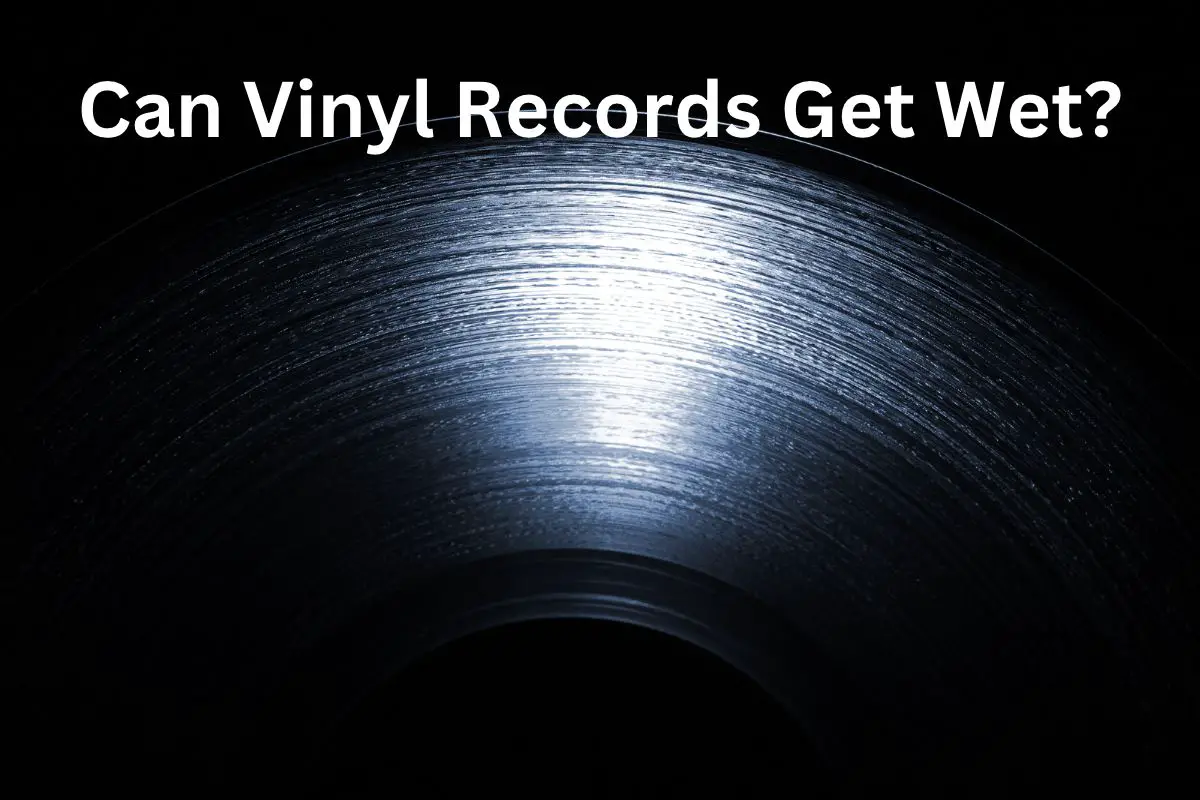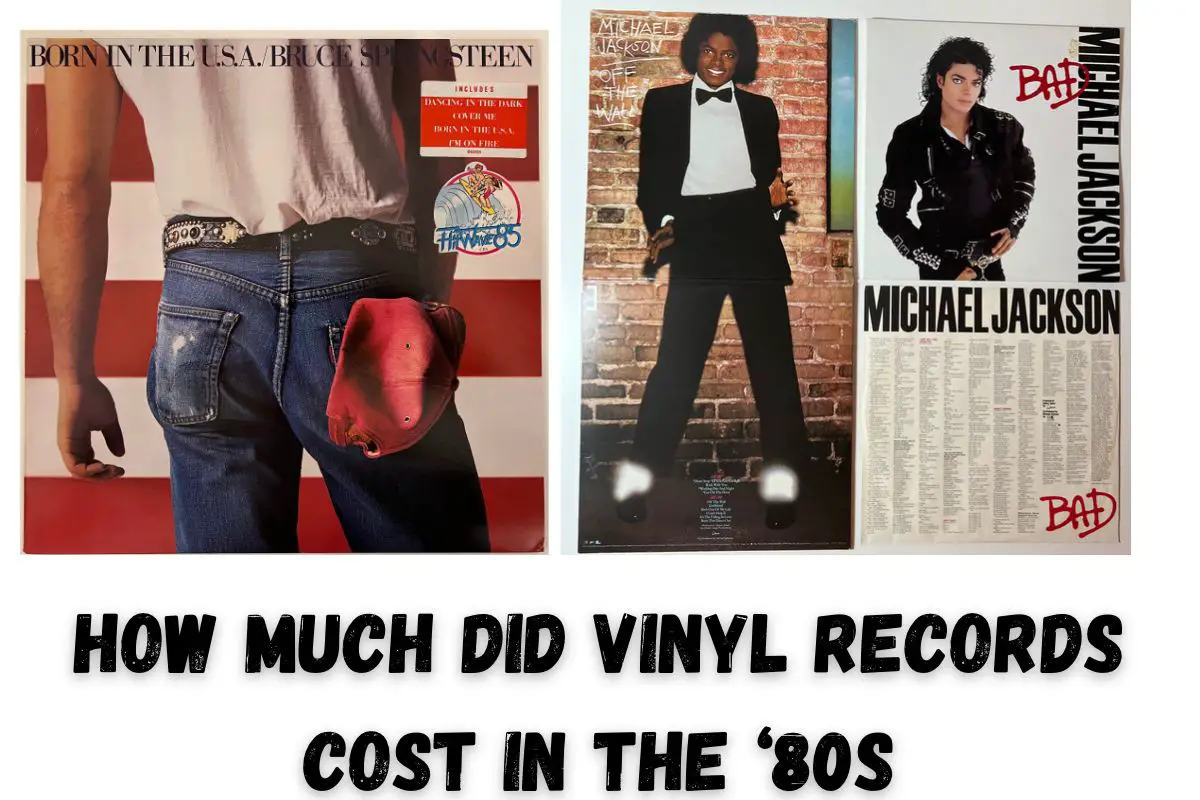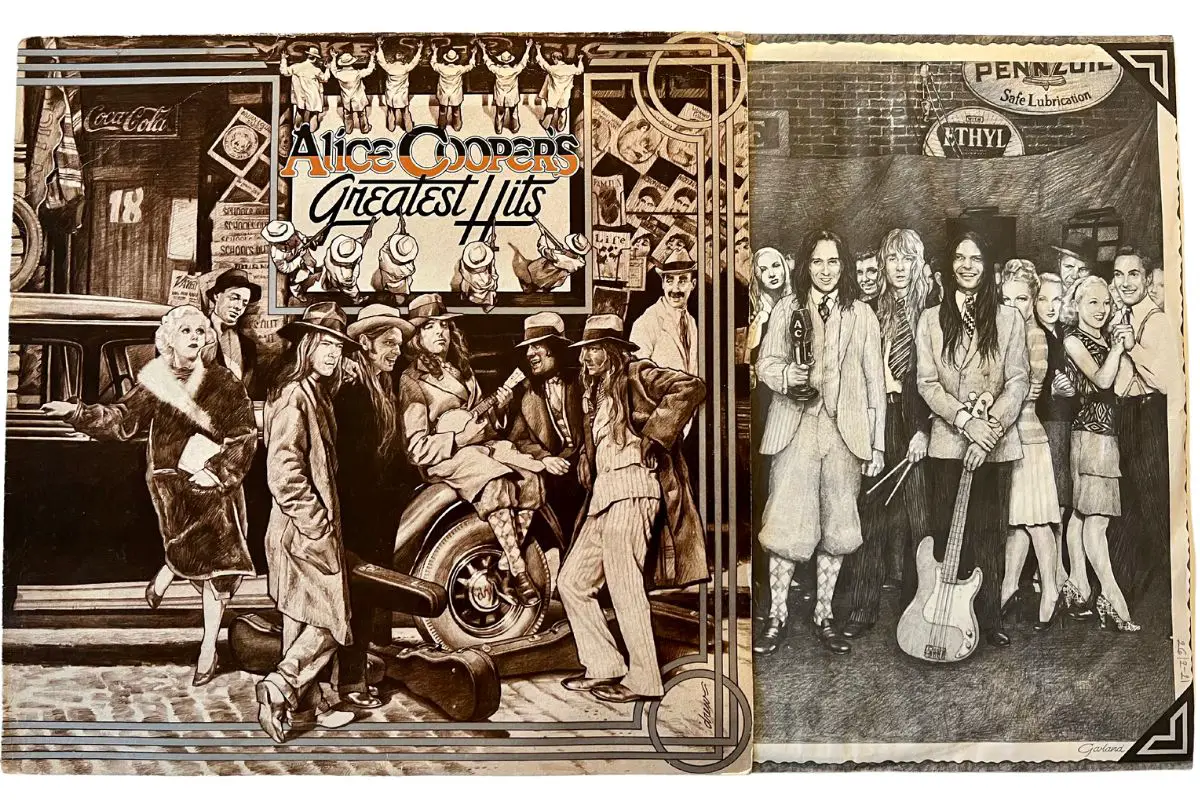This post contains affiliate links.
Cleaning vinyl records with microfiber is an essential step if you want your vinyl to have a pristine and undistorted audio quality. The reason is that dust and dirt on the surface of your vinyl can cause it to produce a popping sound. So, how do you clean your record using a microfiber cloth?
The cleaning process of vinyl records using microfiber involve:
- removing dust
- using alcohol or dishwashing liquid for dirt removal
- rinsing
- drying
This process allows you to clean your vinyl record without scratching it or ruining its sound quality. (source)
Cleaning your vinyl records is a critical step to preserving them. But other maintenance methods will help your vinyl last a lifetime.
Table of Contents
Cleaning Vinyl Records With Microfiber
A vinyl record collection is a rather expensive hobby that can hurt your wallet. But nothing hurts more than finding out that your record is starting to sound bad. Various factors such as distortion, popping, and fuzzy sound can cause a vinyl record’s degrading audio quality.
For that reason, cleaning your vinyl records is highly essential. However, the process is not a simple wipe-and-rinse technique. There are a few steps that you need to follow when cleaning vinyl records with microfiber.
Moreover, you will need the following materials for the cleaning process:
- microfiber cloth
- distilled water – tap water can leave minerals on the grooves of your record
- isopropyl alcohol – a common ingredient found in many record cleaners
- dishwashing liquid
- spray bottle – this material is optional, but it will let you apply your cleaning solution in a controlled manner.
1. Prepare Your Cleaning Solution
Before getting your vinyl record out of its sleeve, the first thing you need to do is to prepare your cleaning solution. You need to mix one part of distilled water with one part of isopropyl alcohol. One to two drops of dishwashing soap will also make the solution effective.
You can either put the cleaning solution in a bowl or a spray bottle. However, a spray bottle is ideal as it will let you apply the solution sparingly.
Moreover, this fluid will also help you in cleaning vinyl records with microfiber.
2. Wipe The Vinyl Record With An Anti-Static Microfiber Cloth
Removing the dust and static on the surface of your vinyl record before applying a cleaning solution will result in an easy cleaning process. For this step, you can either use an anti-static brush or a microfiber cloth. This way, you can wipe away dust and static from the vinyl record without scratching it.
You may be asking why you should use a microfiber cloth instead of an anti-static record brush. Well, you can opt to use a brush, but you have to note that it costs more than a microfiber cloth.
To find out how effective microfiber is, let us establish its difference from an anti-static brush:
|
Microfiber Cloth |
Anti-Static Record Brush |
|---|---|
|
The fibers dislodge the dirt stuck on the record’s surface. |
It has extremely fine carbon fibers that can gently remove dirt from the record surface. |
|
Can catch microscopic dirt particles |
Effective in swiping dirt and dust particles |
|
The dirt caught by the fibers stays stuck to the cloth until you wash it. |
Carbon fiber is electrically conductive. Thus it can remove static from the record surface. |
|
The fibers can get through the record grooves to remove dust and static |
Soft enough to leave your record scratch-free |
Looking at this comparison, you will see that a microfiber cloth and an anti-static brush works similarly in cleaning your vinyl records.
3. Check If There Is Any Visible Blemish On The Record
Place the record under a soft and bright light. This type of light will allow you to see if the record surface has discolorations, fingerprints, and smudges.
If you see any blemishes, you need to wash your record with warm, soapy water. Once the record is dry, then begin at step one again. Remember that you should only be cleaning vinyl records with microfiber to prevent scratching.
4. Apply Your Cleaning Solution To The Problem Areas
Now that you have removed the blemishes, you will see the areas that need intensive cleaning. Inspect your record once again and apply your cleaning solution for every dirt that you see.
However, you need to be extremely careful during this process. Make sure that the liquid will not touch the record label. The reason is that wetting the label can cause discoloration and will loosen the epoxy.
5. Wipe The Record Clean In A Circular Motion

Need a microfiber cleaning cloth? Here’s my favorite from Amazon.
Allow the cleaning solution to sit for at least a minute so the dirt on the record would soften. After that, get your clean microfiber cloth and wipe the record’s surface in a circular motion. You can also apply a little pressure while wiping to ensure that you are rubbing away the stubborn blemishes.
But make sure that you are not applying too much pressure as it can damage your vinyl record. In addition, avoid touching the label to prevent yourself from damaging it.
6. Dry Cleaning
You need to clean your vinyl record often to maintain its excellent condition. But if there are no dirt or blemishes on the surface of your record, you can opt not to do the steps above. Instead, you can do the dry cleaning method for a fast yet effective process.
After using them, dry cleaning vinyl records with microfiber will ensure no dust or static left on the groove.
For this process, let your vinyl record spin on your turntable. With a light touch, hold the microfiber cloth gently on the surface of the record as it spins. This way, you will be able to wipe away the static and dust buildup.
After one to two rotations, gently angle the cloth to the edge of the record. Then, slowly pull it off the surface. This step will ensure that no dust is left on the record surface. (source)
Why You Need To Clean Your Vinyl Records
Your vinyl records require cleaning from time to time. Such is especially true if you purchased secondhand records. The reason is that dirty records sound bad and can even ruin your record player’s stylus.
Moreover, cleaning vinyl records with microfiber is the most effective way to preserve their quality. You can ensure that muck, dust, and dirt will not contaminate your collection with proper cleaning.
More than that, here are other reasons why you need to clean your records:
Vinyl Records Can Be Contaminated With Particles That Can Scratch Them
Even if you clean your vinyl record before storing it, there can still be dust and small particles on the surface when you take it out of the sleeve. Such is especially true for newly bought vinyl records.
Manufacturing places are contaminated with dirt and dust that can stick to a statically charged record. In addition, the record production process leaves the record surface full of gummy release agents. This residue can contaminate your turntable mat and stylus, as well as your other records.
If such a thing happens, the contaminants can also stick to your other records, thus ruining their audio quality.
Furthermore, cleaning vinyl records with microfiber can remove both the dirt and static on their surfaces.
Vinyl Records Have A Static Charge.
Pulling your vinyl record out of its sleeve produces friction. As a result, its surface becomes positively charged with static electricity.
A statically charged vinyl record can be a nuisance for various reasons. For instance, it will stick to the turntable mat every time you need to lift it. But what is worse is that the static charge can attract dust and other particles that can ruin your record.
For this reason, the best thing to do is to wipe your record with an anti-static microfiber cloth before and after using it. (source)
When To Clean Your Vinyl Records
Now that we have established the importance of cleaning your vinyl records, the next question is, “how often should you clean them.”
Vinyl records are delicate items. For this reason, following the cleaning process is essential. But how often should you be cleaning vinyl records with microfiber? Below is the answer:
Clean Your Records After Buying Them
As mentioned, factories, where vinyl records come from can contaminate them with dust and dirt. Such is especially true if you bought a record from a store you do not trust and not from an online shop.
So, before a newly-bought record hits the shelf at a local store, distribution may have stored it in a warehouse for a long time. Meaning dirt and dust may be on its surface and its jacket when it reaches your home.
That said, make sure to clean your vinyl record as soon as you get it from the record store. Additionally, you should clean the sleeve before storing it with your other collection.
Before Putting Them On Your Record Player
It would be best to clean vinyl records with microfiber before putting them on your turntable. This way, you will be able to protect your record player’s needle. Wiping the record with a microfiber cloth will also prevent possible dust buildup from scratching them.
That said, cleaning the record will prolong its life.
But this process is only applicable if you are not using the record daily. The reason is that exposing it to chemicals every day will do more bad than good.
If you play a vinyl record daily, it is ideal for cleaning it using the drying method. Wipe the surface of the record using a microfiber cloth to remove dust and other particles.
Additionally, return the record to the sleeve once it has finished playing. This way, you will be able to prevent your record from acquiring scratches accidentally.
Once They Acquire Damage
Your vinyl records are going to acquire damage at one point in your life. It can be that you accidentally dropped the record, or you touched the groove side. While many types of damages can happen, cleaning your records after any damage is essential.
Additionally, your hands need to be clean whenever you need to touch your records. This way, you will not leave dirt and smudges when you touch them.
Before Returning The Vinyl To Their Sleeves
Once you are done playing vinyl, you should clean it first before putting it back on its sleeve. Like when you bought your record, this process will ensure no dirt particles on its surface.
This time, you do not need to apply a cleaning solution to the record. Instead, it would be best to clean vinyl records with microfiber to remove whatever is on their grooves and surface.
In addition, you need to clean the sleeves as well. The reason is that there can also be dust inside it and on its surface. After cleaning both the sleeve and the vinyl record, then you can return it to their storage. (source)
Tips For Maintaining Your Vinyl Records
Cleaning vinyl records with microfiber is an excellent way to preserve their good condition. But a proper cleaning method is not enough. Instead, you should also know what the other maintenance methods are.
Proper maintenance is crucial if you want to protect your vinyl records. If you do not know how to maintain your records, they will lose their good sound quality in the long run.
Moreover, vinyl records are prone to scratches. That said, here are some maintenance tips:
Proper Storage
After cleaning vinyl records with microfiber, another vital maintenance step is proper storage. It is essential to note that you should store your records vertically and never horizontally.
Stacking vinyl records horizontally for a long time can result in warping. The reason is that the weight of the records above will put pressure on the ones below. In addition, make sure that your storage area is away from humidity and heat.
Avoiding Direct Sunlight
Cleaning vinyl records with microfiber will keep them free from further damages. However, it is not enough to clean your records.
Vinyl records are prone to warping when exposed to extreme temperatures. When a record warps, fixing it will be a complex process. Even if you were able to fix the damage, you would never restore the sound quality of your vinyl.
For this reason, please do not place your storage area near windows where sunlight can reach it. Even if your vinyl records did not warp, sun exposure could cause the record sleeve’s design to fade in the long run.
Keeping The Records In Their Protective Sleeves

One thing to take note of when you have vinyl records is that you need to beware of dust and dirt. These particles are two of the most damaging things for vinyl records.
That said, you need to clean your storage area from time to time. This maintenance step will keep the dust and dirt away from your record. As a result, you will be able to keep the records’ sound quality.
Furthermore, you do not want your vinyl to rattle around inside its sleeve. What is the point of cleaning vinyl records with microfiber if they will get scratches eventually, right? For this reason, you need to use inner sleeves for your records.
- Paper – cheapest and most basic option. Paper sleeves are commonly included in the package when you purchase your vinyl. However, this material can produce paper dust that will stick to your record.
- Poly sleeves – more durable compared to paper but are also more expensive. If you are a serious vinyl collector, this material is the ideal sleeve to use. Just like cleaning vinyl records with microfiber, poly sleeves eliminate dust issues.
- Paper with poly lining – this sleeve is paper on the outside and poly on the inside. The paper makes the material rigid, while the polypropylene makes it smooth. (source)
Proper Handling
Cleaning vinyl records with microfiber is one way to keep them clean. But another way to do that is to touch the records as little as possible.
Of course, holding your vinyl records is not preventable. But when you do, make sure that you are only touching the inner label and edges. Keeping your hands away from the record surface will prevent grease and natural oil on your fingers from getting on it.
Using The Record
You can also take steps to extend the lifespan of your records when you are playing them. For instance, your hand needs to be very steady when cueing your record.
A steady hand is especially essential if you have a manual turntable as you need to lift and put its needle on the record. If you are not careful enough, you can end up scratching your vinyl, thus ruining its audio quality.
That said, put your hand on the side of the record where you can rest it to something to ensure stability. Then, carefully lift the stylus using your finger.
Moreover, it would be best to be extra careful when removing the needle from the record grooves. It would be best if you waited until the record stops spinning before lifting the needle. If you move the needle while the record is still spinning, chances are you will scratch its surface. (source)
While cleaning vinyl records with microfiber is a vital maintenance method, proper usage is also crucial for keeping their quality. (source)
Related Articles
- How To Properly Use WD-40 To Clean Vinyl Records
- Why You Should Never Use Windex To Clean Vinyl Records
- Is Vinegar a Good Way to Clean Vinyl Records?
- Why You Should Never Use Windex To Clean Vinyl Records
Sources
- Jenna Miles, The Beginner’s Guide To Vinyl, https://books.google.com.ph/books?id=UFfsDQAAQBAJ&pg=PA173&dq=Cleaning+Vinyl+Records+With+Microfiber&hl=en&sa=X&ved=2ahUKEwir2MCytoP0AhUHK5QKHVDTCC8Q6AF6BAgLEAI#v=onepage&q=Cleaning%20Vinyl%20Records%20With%20Microfiber&f=true, accessed November 6, 2021.
- Charles R. Acland, Residual Media, https://books.google.com.ph/books?id=_wLPo51YIWEC&pg=PA233&dq=vinyl+record+maintenance&hl=en&sa=X&ved=2ahUKEwjB7rmYuIP0AhWDG6YKHVmIA8gQ6AF6BAgFEAI#v=onepage&q=vinyl%20record%20maintenance&f=false, accessed November 6, 2021.
- Paul E. Winters, Vinyl Records, and Analog Culture in the Digital Age: Pressing Matters, https://books.google.com.ph/books?id=AtMbDQAAQBAJ&pg=PA125&dq=how+to+clean+vinyl+records&hl=en&sa=X&ved=2ahUKEwiR9er3toP0AhWaL6YKHYS5CioQ6AF6BAgEEAI#v=onepage&q=how%20to%20clean%20vinyl%20records&f=false, accessed November 6, 2021.
- Record Sleeve, https://en.wikipedia.org/wiki/Record_sleeve, accessed November 6, 2021.
- Getting Started: How to Use a Record Player, https://victrola.com/blogs/articles/getting-started-how-to-work-a-record-player, accessed November 6, 2021.
- Popular Science, https://books.google.com.ph/books?id=Ei0DAAAAMBAJ&pg=RA2-PA58&dq=when+to+clean+vinyl+records&hl=en&sa=X&ved=2ahUKEwivyL74t4P0AhUYxYsBHR7HAt84ChDoAXoECAgQAg#v=onepage&q=when%20to%20clean%20vinyl%20records&f=false, accessed November 6, 2021.
VacationVinyl.com is a participant in the Amazon Services LLC Associates Program, an affiliate advertising program designed to provide a means for sites to earn advertising fees by advertising and linking to Amazon.com. We also participate in other affiliate programs which compensate us for referring traffic.




